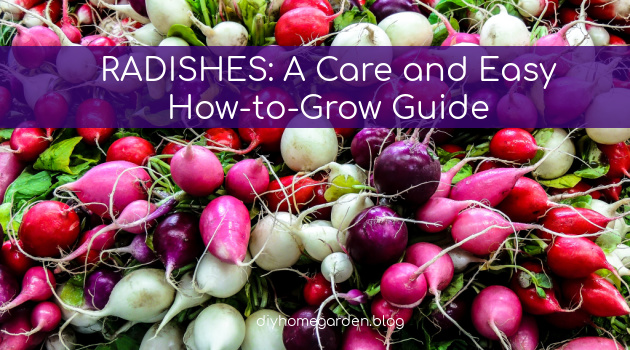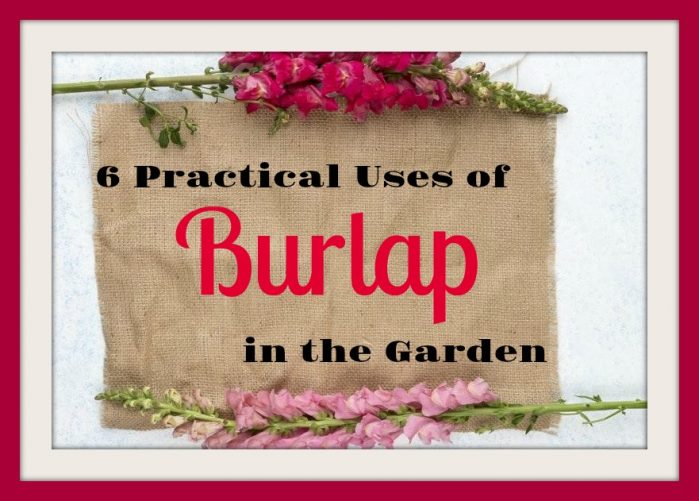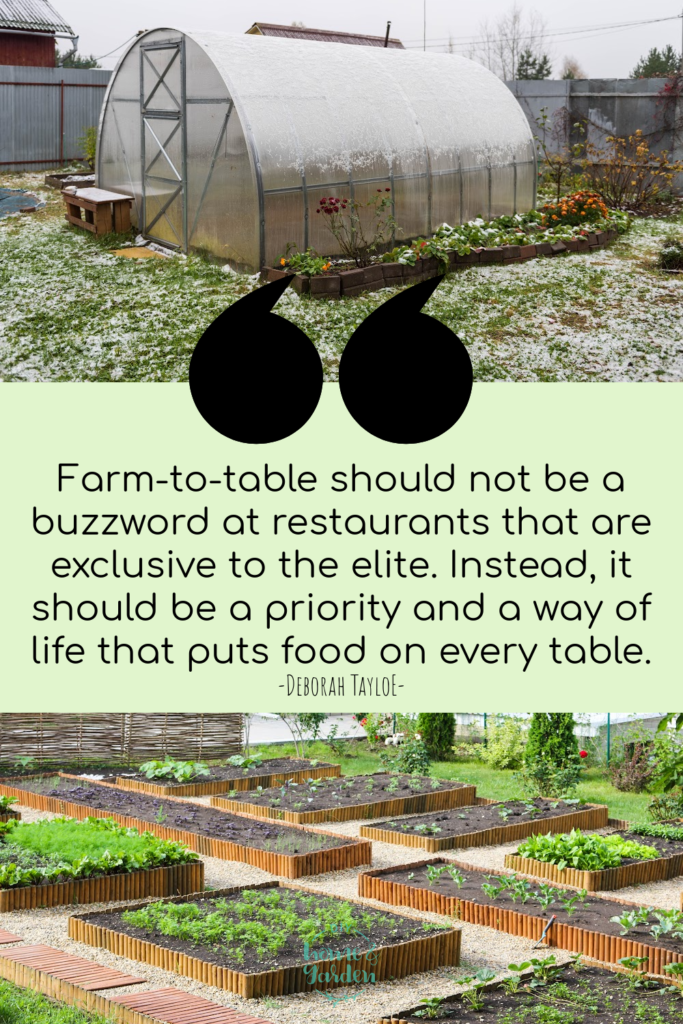The best part about a late summer garden is that you can start it in almost any climate.
Depending on your hardiness growing zone, you can have the seeds in the ground any time from late July to early September. The soil is still warm, so these heat-loving seeds will germinate quickly. Thus, you’ll grow more food for your family and save money on your grocery bill.
Below are some tips for planting a late summer garden and 21 of the best herbs and vegetables to grow.
Nine Tips for Planting a Late Summer Garden
Although these plants are not super heat-tolerant, they will be young and resilient in the early days, growing larger as the sunlight gets shorter each week.
The key to success? Keeping them well-watered and finding a spot with a bit of shade to protect them from the late afternoon sunshine.
If you plant these vegetables and herbs as a second season rotation, remove all weeds and amend with compost before you plant these seeds. If you live in a hot or arid region, check with your local county agricultural extension office to see if these late-summer seeds will do well in your area. They are best suited to moderate to cool growing zones.
1 – Pick a sunny spot
Since most of the growth happens in late summer and early fall, consider choosing an area with at least six hours of sunlight each day.
If growing in containers, position them on a sunny deck or patio.
2 – Loosen the soil once you pick a site for your late summer garden
Use a garden fork or tiller to loosen the top few inches of soil in your planting area, so the plants can easily establish their roots.
It also enhances growth.
3 – Test the pH level
Carry out a soil test before adding any amendments. The ideal range for most herbs and vegetables is between 6.0 and7.0.
4 – Add organic matter
Consider boosting your soil nutrient level by adding compost or well-rotted manure—to help give the plants a good start.
It’s also a great way to enhance drainage and increase moisture retention.
5 – Choose plants for a late summer garden according to your specific growing conditions
When selecting plants for your late summer garden, consider the sunlight and heat they can tolerate.
Some herbs, such as basil and cilantro, are more sensitive to heat and need to be planted in a shady spot. Others, like oregano and thyme, can handle full sun.
6 – Plant your seeds or transplants
Be sure to plant your seeds or transplants at the correct depth and space them according to the package instructions.
7 – Water your late summer garden regularly
Herbs and vegetables need to be kept moist, so make sure to water your garden regularly.
If possible, water in the morning so the plants have time to dry off before nightfall.
8 – Fertilize
Feed the plants regularly. A good rule of thumb is to fertilize every two weeks.
9 – Protect your late summer garden if you have an early autumn frost
Offer the plants shelter as the temperatures start to dip in the fall. This will extend your growing season, supplying you with fresh produce well into the winter.
You can either bring them indoors or cover them with a frost blanket.
The 21 Best Vegetables and Herbs to Plant in Your Late Summer Garden
Are you ready to extend your growing season and reap the bounties in the fall? Try to plant these vegetables and herbs.
EDITORIAL NOTE: What and when to plant depends primarily on your local USDA growing zone. Those in cooler climates can plant by the end of July or early August. However, those in warmer locations should wait until the end of August.
1. Lettuce (Lactuca sativa)
Lettuce, a leafy herbaceous annual in the aster family, comes in a wide range of varieties featuring different colors yet packed with powerful antioxidants, including vitamins A, C, and K, potassium, iron, and folate.
Like most greens, they enjoy cool weather. Planting them in late summer allows them the advantage of the cooler fall weather, rewarding you with a bountiful harvest before winter.
- Soil Needs: Moist, well-drained; preferably, loamy
- Sun Exposure: Partial shade
- USDA Growing Zones: 4-9
2. Arugula (Eruca vesicaria)
Arugula, also known as rocket or roquette, is a nutrient-dense leafy herb in the mustard family, exhibiting a peppery flavor that adds zest to salads.
It’s rich in vitamins A and C as well as cancer-preventing glucosinolates.
- Soil Needs: Moist, well-drained; preferably, loamy
- Sun Exposure: Full sun, partial shade
- USDA Growing Zones: 3-11
3. Spinach (Spinacia oleracea)
Spinach is also packed with carotenoids, lutein, and zeaxanthin, an excellent source of vitamins A, C, and K essential for eye health.
The crop takes only 30 to 45 days to mature, so you can plant in several successions throughout the fall months.
- Every 2-3 weeks, sow a new batch of seeds.
- Soil Needs: Loamy, well-drained, moist
- Sun Exposure: Full sun
- USDA Growing Zones: 2-9
4. Kale (Brassica oleracea var. acephala)
It’s among the easiest Cole crops to grow, with the seeds able to sprout through either cool or warm soil.
Raised in the fall, kale takes advantage of the cool weather to sweeten up and deepen in flavor.
Start your seeds in mid-to-late summer for a fall harvest.
- Soil Needs: Loamy, moist, well-drained
- Sun Exposure: Partial shade, full sun
- USDA Growing Zones: 7-9
5. Swiss Chard (Beta vulgaris var. cicla)
Swiss chard may take a while (sixty days or more) to reach maturity, but the glossy, delicious, and nutritious leaves are worth the wait.
The crop is an excellent choice for when you want additional variety to your lettuce patch.
Plant the seeds in succession every few weeks to keep the harvest going strong into fall.
If you’re already harvesting them as a cut-and-come-again, then no need to reseed. The plants may have slowed down production during summer but will resume as the weather cools in fall.
- Soil Needs: Loamy, rich
- Sun Exposure: Partial shade, full sun
- USDA Growing Zones: 3-10
6. Cabbage (Brassica oleracea)
Cabbage grows best in fall, so planting it in mid-to-late summer gets you an early start on the season.
As with other Cole crops, direct seed or set out transplants.
The crop takes approximately 90-120 days to mature, with most cultivars able to withstand a light frost.
To extend your harvest into the winter, offer them protection. Cabbage won’t continue growing as the weather gets colder but will retain its texture and become even sweeter.
- Soil Needs: Rich, well-drained
- Sun Exposure: Partial shade, full sun
- USDA Growing Zones: 1-9
7. Beets (Beta vulgaris)
Like all root vegetables, beets grow best from seed as they dislike root disturbance once established.
The entire plant is edible, from the leaves (which taste like spinach) to the roots (the traditional “beet”).
Though they’ll tolerate the summer heat, the crop tends to get woody and bitter quickly, making late summer to early fall the ideal time to resume succession planting.
- Soil Needs: Well-drained, loamy, rich
- Sun Exposure: Full sun to partial shade
- USDA Growing Zones: 2-11
8. Broccoli (Brassica oleracea var. italica)
Broccoli enjoys cooler weather and will take hard frosts. It’s only the stress from the summer heat that causes it to bolt and flower; otherwise, it directs all the energy it can muster into producing large, green heads.
Fall broccoli is delicious; the heads are tender and extra sweet. A few light touches of frost further enhance the flavor.
Start seedlings in flats, then transplant them ten weeks before your area’s first expected frost date.
Use floating row covers to protect the seedlings from potential pest attacks—in late summer—until the weather cools.
- Soil Needs: Rich, sandy
- Sun Exposure: Full sun
- USDA Growing Zones: 3-10
9. Radishes (Raphanus sativus)
Radishes are fast-growers, taking just three to four weeks from seed to harvest. They can be long and white or round and red, exhibiting a mild, sweet, or bitter taste.
A few, like the sizeable Japanese Daikon radish, can thrive in cold weather. But a few others, such as the black radish, do best in spring and fall.
Radishes are best direct-seeded into the garden, but you can start them indoors if you have a long growing season.
- Soil Needs: Sandy, loamy
- Sun Exposure: Full sun
- USDA Growing Zones: 2-10

10. Peas (Pisum sativum)
There are snap peas, soup peas, snow peas, and English (or shell) peas.
All are cool-season annuals that grow well if you plant them in late summer for a fall/winter crop or early spring for a summer harvest.
The plants are relatively short, so they won’t require support.
Avoid the hottest summer days for a good harvest, as peas readily cease production when the weather gets too hot.
- Soil Needs: Well-drained, loamy
- Sun Exposure: Partial shade, full sun
- USDA Growing Zones: 2-9
11. Pole Beans (Phaseolus vulgaris)
Pole beans are a staple of most vegetable gardens considering that they’re easy to grow—thriving even in the smallest of spaces—and incredibly productive.
Unlike the bush varieties, they grow as climbing vines and require support.
Sow seeds directly into the garden, making sure to adequately space the plants for maximum growth and proper ventilation.
- Tip: Set up stakes, trellises, or other support systems (you may be using) before planting to avoid disturbing the plants’ fragile roots.
- Soil Needs: Well-drained, moist
- Sun Exposure: Full sun
- USDA Growing Zones: 2-11
12. Turnips (Brassica rapa)
Turnips are root vegetables that can be eaten either raw or cooked.
Like beets, both the root and leaves are edible and make a classic addition to stews and soups.
Chop it for salad or mash it with butter. Turnip will still deliver its signature slightly sweet, earthy flavor, nourishing your body with fiber, vitamins, and minerals.
- Soil Needs: Sandy, loamy
- Sun Exposure: Full sun
- USDA Growing Zones: 2-9
13. Carrots (Daucus carota var. sativus)
Plant carrots in the late summer heat, and they’ll pop up fast and grow tall, sweet, and thick throughout the fall.
Direct sow approximately 8-12 weeks before your region’s first expected frost, then thin to 3 inches apart once the tops grow a few inches tall.
Overwinter under a thick layer of mulch—if growing in zones with mild winters—for a continuous harvest into the spring.
- Soil Needs: Loose, well-drained
- Sun Exposure: Partial shade, full sun
- USDA Growing Zones: 3-10
14. Fennel (Foeniculum vulgare)
Fennel is an aromatic Mediterranean herb belonging to the Apiaceae family that includes celery, carrots, dill, and parsley.
It’s grown both for its edible bulbs and leaves and its ornamental value.
Grow it from seed to minimize root disturbance. If possible, do not plant it alongside dill as they may cross-pollinate, negatively impacting its flavor.
- Soil Needs: Moist, well-drained
- Sun Exposure: Full sun
- USDA Growing Zones: 4-9
15. Cauliflower (Brassica oleracea)
Cauliflower is quite fussy regarding temperatures, but it’s generally an easy crop that’s doable even for the average gardener.
Simply pay attention to its growing requirements.
Most cauliflower varieties rely on extended periods of cool temperatures to produce good heads.
And so, if growing in the northern zones, plant in the late summer to allow the crop ample cool weather in the fall.
Consider starting the plants indoors in peat pots in a conditioned growing spot (700F/210C) in the southern climate.
- Soil Needs: Rich, well-drained
- Sun Exposure: Full sun
- USDA Growing Needs: 2-11
16. Mustard Greens (Brassica juncea)
Like its relatives–kale and collard greens–mustard greens are nutrition-dense but with a bit of a spicy twist.
They’re perfect for adding flavor (and color) to salads, sautés, and stir-fries.
Direct sow into the ground starting mid-summer (depending on your growing zone), and continue for a successive harvest every 2-3 weeks.
- Soil Needs: Rich, well-drained, and moist
- Sun Exposure: Full sun, partial shade
- USDA Growing Zones: 8-11
17. Bok Choy (Brassica rapa var. chinensis)
Also referred to as Pak Choi, Bok Choy boasts of nutrients and a crisp, tender, yet smooth texture that envelopes a slightly peppery flavor.
This veggie is traditional in stir-fries and adds excellent flavor to fall soups and stews.
Though quite cold-hardy in growing zones 8 and above, bok choy will quickly bolt once spring arrives.
Begin planting mid-to-late summer until six to eight weeks before your first expected frost.
- Soil Needs: Rich, well-drained
- Sun Exposure: Partial shade, full sun
- USDA Growing Zones: 2-11
18. Kohlrabi (Brassica oleracea var. gongylodes)
“Kohlrabi” is simply the German name for “cabbage turnip.”
The crop is easy to grow and quick to mature, making it an excellent vegetable for a late summer garden.
It thrives in cool temperatures and won’t mind a mild frost when the weather gets colder. However, dry soil and hot weather harden the bulbs, making them woody and bitter.
In cooler areas, consider planting kohlrabi for a fall or spring harvest. In warmer regions, plant it in the fall for a winter harvest.
- Soil Needs: Rich, well-drained, moist
- Sun Exposure: Full sun
- USDA Growing Zones: 2a-11b
19. Chicory (Cichorium intybus)
Chicory is a deep-rooted, nutrient-rich herb in the dandelion family. The plant exhibits spoon-shaped leaves with blue flowers, both of which are edible. The leaves have a slightly bitter taste, while the flowers are sweeter.
Chicory is often used as a coffee substitute and often on the shelves (pre-ground) at most health food stores.
- Soil Needs: Rich, well-draining
- Sun Exposure: Full sun, partial shade
- USDA Growing Zones: 3-10
20. Dill (Anethum graveolens)
Dill foliage, better known as dill weed, has a fresh, grassy flavor that goes well in salads, soup, and pickles.
The seeds can be used in pickling recipes or as a spice in Indian and Middle Eastern dishes.
Depending on your dill variety, you can begin harvesting the leaves after about 40-55 days and the seeds 85-100 days.
- Soil Needs: Well-drained, rich
- Sun Exposure: Full sun
- USDA Growing Zones: 2-11
21. Cilantro aka Coriander (Coriandrum sativum)
This annual herb is best known as the key ingredient in guacamole. All parts of the plant are edible, but the leaves and seeds are most commonly used in cooking.
Cilantro has a light, lemony flavor that goes well in salsa, curry, and soup.
It’s fast-growing and does best when direct-seeded into the garden.
- Soil Needs: Loamy, moist, well-drained
- Sun Exposure: Partial sun, full sun
- USDA Growing Needs: 2-11
The Takeaway: Adding a Late Summer Garden Can Help Increase Food Security and Lower Grocery Costs
With the long list of vegetables and herbs to plant in your late summer garden, you’re sure to find the perfect crops for your needs.
These plants will do the trick if you’re looking to add color, flavor, or both to your meals. So get out there and do the planting!
Remember, what you put in is what you get back; show your late summer garden some love, and it will reward you tenfold!



